
Fast, affordable Internet access for all.
Learning about all the different types of network technologies can feel intimidating, but the good news is that there's nothing especially complicated about it. Fundamentally, each one just describes a different way of getting information from Point A to Point B (and vice versa). Whether wired or wireless, each offers advantages based on the needs, assets, and challenges in your community.
We understand that it can be easy to take the path of least resistance, and buy into a connectivity solution (like 5G or Starlink) that costs less or promises fast results. We also understand that very few cities looking to solve the digital divide in their communities today arrive at the table with a blank check and unanimous support. But our information infrastructure is as important as our roads, schools, electrical utilities, and water systems. When investing, we should always ask: is this solution reliable? Is it scalable for future population growth and ever-expanding needs? Does it offer the chance to get to every home equitably?
This page breaks down the main network technology types for information infrastructure: DSL, cable, fiber-optic, mobile and fixed wireless, and satellite.
Digital Subscriber Line (DSL) networks began their life as telephone networks many decades ago. While they rely on fiber for the parts of their network that far away from your home, but the actual connection to your house (frequently called the 'last mile') uses copper phone lines. As a result, there is a significant bottleneck generally occurs over the last-mile.
Phone lines no longer offer the speeds we need to remain competitive in the digital economy. The CEO of AT&T admitted that DSL is obsolete compared to cable. DSL over phone lines is limited by distance; the signal degrades for those living more than 1 mile away from the central office. Even for those living close to a central office, the top speeds are not comparable to speeds commonly offered with an all fiber connection.
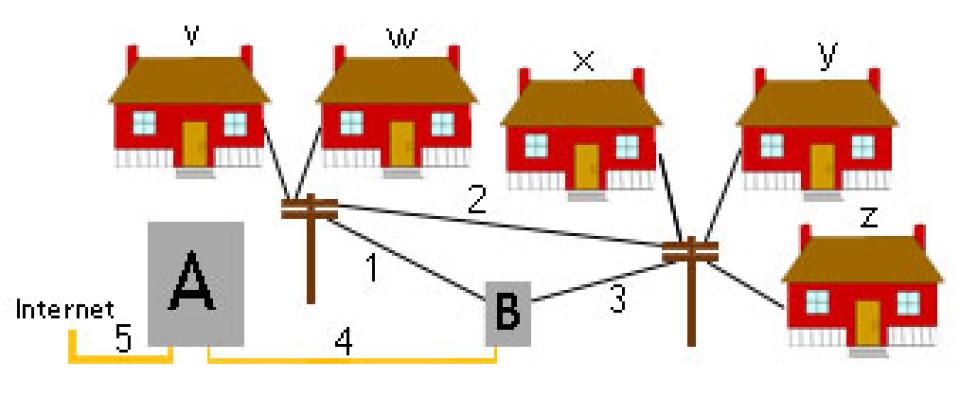
Cable networks began their life as video networks half a century ago. They were originally designed as one-way streets: to deliver video content from the HBO or Showtime to your house. In the 1980s, they began to be repurposed as two-way streets to allow homes to access the Internet. As a result, the vast majority of cable networks support much faster download speeds than upload speeds. This makes them more and more unfit for the modern digital age, as we begin to send (upload) as much information from our households across the Internet as we consume (download).
At the same time, while they tend to offer faster download speeds than DSL (especially those using the DOCSIS 3.1 standard), cable systems use a shared network to cover the last mile. This means all the houses in the diagram to the right have to share bandwidth. In most situations, the loop is shared by hundreds of houses. If a few of them are hogs, everyone's performance suffers.
As more people go online and those online use more and more bandwidth, a shared cable system will not be able to keep up. This is why communities are increasingly looking toward full fiber-to-the-home networks. These networks are the most expensive over the short term, but the safest investment in the long term.
Fiber-optic networks have been used for decades to transmit large volumes of traffic across the country. The economics of fiber networks have only recently allowed for connecting the fiber directly to the home, creating a fiber-to-the-home (FTTH) network.
Much of the following information comes from "Municipal Broadband: Demystifying Wireless and Fiber-Optic Options."If you are on the Internet, you are using fiber for some portion of your connection.
Community fiber networks around the country offer the fastest speeds at prices similar or below the prices we are currently paying for slower speeds. These faster speeds and affordable prices can be a lifeline for smaller businesses that cannot afford thousands of dollars per month for the faster connections generally available.
The FCC has recognized the unique benefits of all fiber networks [pdf] (page 76):
As broadband needs continue to grow, fiber emerges as the only last-mile technology capable of meeting ultra high-speed needs. So, any solution that brings fiber closer to the home by pushing it deeper into the network puts into place an infrastructure that has long-term strategic benefits.
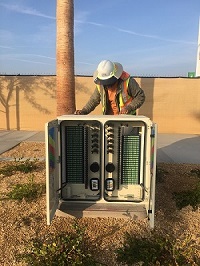
Fiber networks will be used for decades, and are less expensive to maintain than cable or copper. Though fiber cables can be cut occasionally by accident - just as cable and phone lines can be cut - well designed fiber networks are redundant. This means that a network has to fail in multiple ways to cause an outage. Some cities have gone years without a minute of downtime from fiber cuts.
Fiber is not half as fragile as some believe. When strung on poles in an aerial deployment, fiber is generally placed with strong steel cabling that prevents it from breaking even when a utility pole is severed at the base. In Burlington, VT, the fiber network has proven more resilient to utility pole accidents than the electrical network. Such networks have survived vicious ice storms, tornados, and hurricanes around the country.
Wireless protocols have led to incredible technologies and are a wonderfully convenient means of communicating. That said, wireless technologies are not magic and will not inevitably replace wires. For the foreseeable future, we expect to see both wired and wireless evolution and a continued complementary relationship.
Below, you will find information about the state of wireless technologies, policies to improve it, common myths, and examples of how some have harnessed its strengths for their communities.
Keep up to date with all things community broadband by subscribing to a once-per-week email with stories about community broadband networks.
Wireless Misconceptions
“[Wi-Fi] is largely a complementary technology to a wireline connection; thus, the speeds a Wi-Fi connection provides are usually a reflection of the speeds of the underlying DSL, cable, or fiber optic connection that connects to a router that then provides connectivity to end-user devices.”
-- Open Technology Institute at New America
A first myth is that wireless is independent of, and a competitor to, wired technologies. In truth, these technologies are more complicated, and often complementary to one another. The FCC 2018 Broadband Progress Report states: "Both fixed and mobile services can enable access to 'information, entertainment, [and] employment options,' but there are salient differences between the two technologies. Beyond the most obvious distinction that mobile services permit their users mobility, there are clear variations in consumer preferences and demands for fixed and mobile services."
Wi-Fi networks use access points or transmitters usually located within a few hundred feet of a personal device (phone, laptop, etc.). Mobile technologies, such as 3G or 4G LTE, rely on cellphone towers that may be a mile or more away. 5G small cell access points will likely be hundreds of feet away or less. These wireless networks are ultimately dependent on wired connections for backhaul - traditional copper networks or the “gold standard,” fiber-optics - and the effectiveness of wireless is often a function of the robustness of the underlying wired technology.
Stockholm, Sweden, exemplifies the marriage of wired and wireless technologies. Because Stockholm began to install fiber throughout the city in the 1990s, wireless companies have been quickly and seamlessly able to deploy multiple, competitive 4G LTE networks. Wireless is conceptually a means of sharing a wired signal, so the more people you share it with, the less each individual gets. In Stockholm, with multiple wireless networks, connected to fiber backhaul, the amount of bandwidth per person is high.
Wireless Internet 101 Fact Sheet from the Institute for Local Self-Reliance
The Art of the Possible: An Overview of Public Broadband Options from the New America Foundation
A second myth - there is a fundamental misconception that wireless technologies will inevitably subsume their wired counterparts, rendering them obsolete. Wireless networks, however, often rely on fiber for backhaul. Wireless is usually less reliable, and the signal often has to be shared by many, slowing the connection. The idea that wireless is the future may result in local leaders overlooking the development of fiber investments - which have proven invaluable for economic development and are faster than wireless technologies.
In Maine, a state that has some of the worst Internet connectivity ratings in the U.S., Governor Paul LePage claimed in 2015 that a private wireless company, RedZone Wireless LLC, would better provide broadband to Mainers than would municipally owned open access networks. The misguided belief that a private wireless solution can outcompete a wired public solution ignores key issues, including: spectrum availability, likely return on investment, and physical limitations. The goal should be providing access to wired and wireless technologies wherever they are needed. Wireless is often advanced as a "good enough" solution that could leave rural areas far behind urban connectivity, which would break more than 100 years of commitment to ensuring all Americans have roughly equal access to communications.
Wireless Networks Need Fiber by CCG Consulting at POTs and PANs
There Are No Magic Bullets to Fix Maine Broadband from GWI
4G Wireless for Rural America? Not Nearly Good Enough from the Institute for Local Self Reliance
A third myth places the blame for the failure of “Muni Wi-Fi” business models on local governments. San Francisco, Philadelphia, Houston, Chicago, and other local governments were involved in "MuniWireless" projects in the mid-2000s. Many of these projects were not even municipally owned but the failure of the technology had a far greater impact than the business model. Citywide Wi-Fi networks were incapable of offering high quality service within homes; they still remain better suited to parks and open public spaces. In particular, the private company Earthlink oversold the expectations of MuniWireless and had no functional business model. The company quickly went bankrupt, but opponents of municipal networks blame cities for the private firm's failings.
Understanding Spectrum
As mobile devices become more ubiquitous and data-reliant, and with the emergence of the “Internet of Things,” wireless networks are increasingly seen as critical tools for modern connectivity. We’ve already mentioned that wireless networks rely intrinsically on backhaul - be that fiber, cable, or sometimes point-to-point wireless most often using microwave. Reinforcing this backhaul by increasing fiber connections may be the best way to ensure a robust wireless future.
In addition to backhaul, the other key component of wireless networks is spectrum. The electromagnetic spectrum is photon wavelength, measured by frequency. If that sounds complicated, don't worry -- you've encountered it before. Spectrum includes radio waves, microwaves, ultraviolet light, x-rays, gamma rays, and more. Everything from cellphones and laptops to baby monitors and security alarms use spectrum to transmit information.
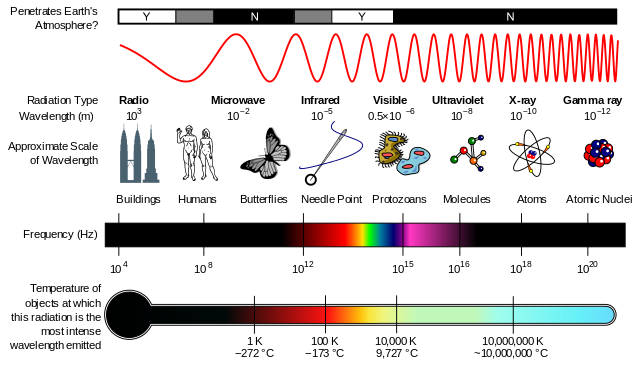
Indutiveload, NASA /Wikimedia Commons /CC-BY-SA-3.0 [GFDL or CC BY-SA 3.0], EM Spectrum Properties via Wikimedia Commons
In recent years, a myth has emerged regarding the so-called “spectrum crunch” -- due to the proliferation of increasingly data-hungry devices, the existing amount of spectrum is insufficient for ubiquitous connectivity. The actual problem is not a shortage of spectrum, but that we are managing spectrum inefficiently.
Sometimes the signals interact with each other, creating "interference." This actually changes the wavelength of the signals, merging them into one, and rendering it useless to the devices. Other times though, all of the signals bouncing back and forth have simply confused our devices, which mix up the signals.
Michael Calabrese from the Wireless Future Projet at New America envisions a world where our devices are able to quickly and seamlessly share spectrum. These smart devices would overturn the existing model for managing spectrum.
"The assumption is that it's spectrum that's scarce. But spectrum isn't scarce at all. Less than 20 percent of the best spectrum is even in use. So once we open it up for this dynamic sharing, and have more unlicensed, more opportunistic access, spectrum won't be the obstacle."
-- Michael Calabrese, Wireless Future Project at New America
Right now, the Federal government manages spectrum largely through a “command and control” model. Government organizations such as the FCC and the NTIA auction off the very “best” spectrum to the highest-bidding carrier. This is licensed spectrum.
An Interview with David Reed in Salon's 2003 piece "The Myth of Interference."
By buying large amounts of licensed spectrum, carriers like Verizon and AT&T are ensured exclusive ownership of certain frequencies. For these carriers, owning licensed spectrum maintains their market power in wireless services.
Licensed spectrum is extremely expensive (for example, bidding at the 2015 spectrum auction topped out at $44 billion) because of the monopoly it grants and allows incumbent carriers to restrict competition by limiting license-holders to a small number of very large firms.
Unlicensed spectrum is the leftovers. This is where the innovations take place. Wi-Fi uses just a subsection of this unlicensed spectrum (the 2.4 Ghz and 5Ghz radio bands), but it carries 60 to 80 percent of all data traffic from mobile devices. As it currently stands, the limited amount of unlicensed spectrum and the inefficient use of licensed spectrum hamstrings wireless connectivity.
Licensed spectrum is not used as intensively as it could be because the command and control system allows carriers to use as much or as little licensed spectrum as they desire. Carriers may choose to leave large amounts of spectrum unused. Governments also use of large amounts of licensed spectrum to support institutions such as the Army and the Navy. These institutions use huge amounts of spectrum, but only in certain locations at certain times. When the wireless companies and the government are not using licensed spectrum, however, no one can legally repurpose these frequencies. For most communities at most times then, these tranches remain unused.
With that in mind, one way to improve wireless connectivity is to change the way spectrum is used and shared. By designating more spectrum as unlicensed, the FCC can support Wi-Fi, mesh, and TV white space technologies to name a few. These technologies would give us the room for greater capacity for an ever-increasing number of devices.
Recently, progress has been made in terms of freeing up licensed government spectrum. In 2015, the FCC opened up 3.5 MHz of spectrum normally reserved for the Navy in what is known as the Citizens Broadband Radio Service. Opening up this frequency for unlicensed use allows for greater public use of spectrum without endangering Navy operations. Actions such as this turn spectrum scarcity into spectrum abundance.
Increasing access to spectrum frees up bandwidth that might otherwise be used less intensively than it could be by incumbent carriers and government institutions.
More information about spectrum:
Wireless Commons Part I: Interference is a Myth, But the FCC Hasn’t Caught On Yet
Recent Advances in the Wireless Future - Community Broadband Bits Episode 154
Why Sharing Spectrum Is Key to Expanding Wireless
Solving the “Spectrum Crunch:” Unlicensed Spectrum on a High-Fiber Diet
Chapter 5: Spectrum from the National Broadband Plan
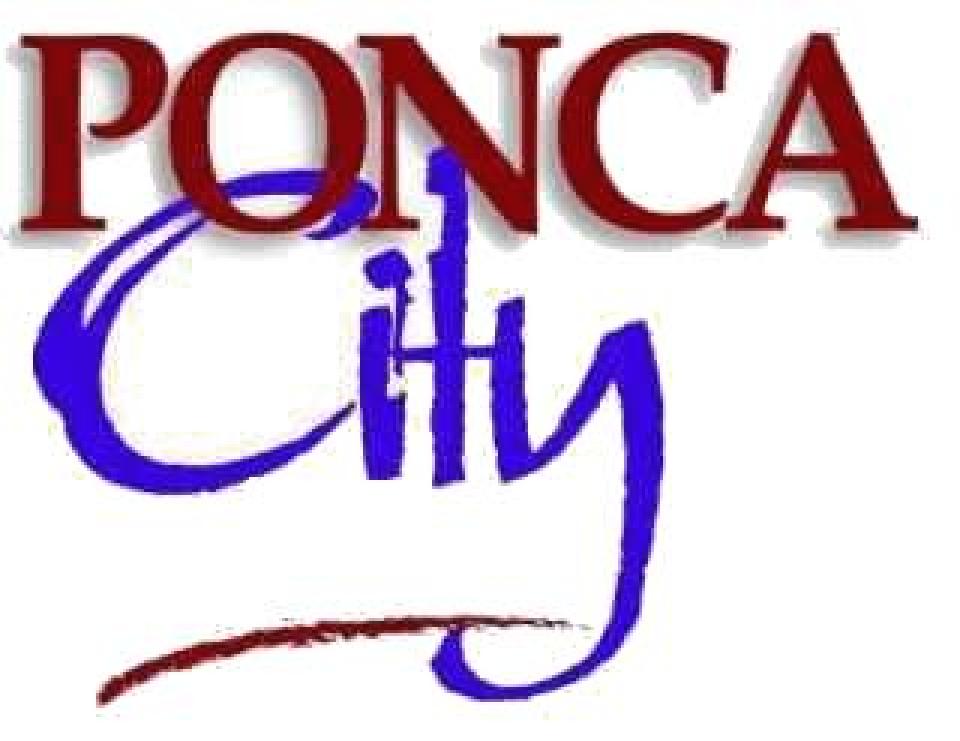
Ponca City is now widely regarded as one of the most successful municipal Wi-Fi networks in the U.S., with over 25 square miles of connectivity, 17,000 users, and annual community savings of $4 million. But the city’s “fastest free Wi-Fi in the nation” did not appear overnight. Rather, it involved an incremental rollout of wireless nodes, a strong fiber backbone, and decades of collaboration between various municipal and private entities.
“The free wireless mesh service — which is so fast and forward-looking that Kansas City, Apple and Google came calling to check it out — has been so successful that Ponca City again is hosting delegations from Oklahoma, throughout the U.S. and places as far away as Australia and Italy.”
-- Wayne Hansen, GovTech Staff Writer and Editor of Digital Communities
Ponca City began connecting government and community anchor institutions to fiber in the late 1990s and early 2000s. Through the public electric utility, the City hooked up municipal buildings, schools, and its SCADA (supervisory control and data acquisition) system.
More about Ponca City:
Does Ponca City Have the Fastest Free Wi-Fi in the Nation? from GovTech
Ponca City Fiber: Serving Businesses, Schools, and Offering Free Wi-Fi from MuniNetworks
It announced plans for a citywide Wi-Fi system in 2008. Located in tornado alley, Ponca City recognized the importance of having a robust citywide public safety system. A citywide wireless mesh network allowed the community to use GIS mapping to gather real-time data through a system of more than 500 ABB Tropos radios. 25 percent of these wireless nodes were connected directly to the City’s fiber network, which ensured reliability and redundancy across the network. If one or several of the nodes fail, the network does not crash, but rather reroutes the service through another node.
After connecting the public safety system and other city utilities, the City extended Wi-Fi services to residents and businesses. It added 150 wireless nodes to account for the bandwidth it would need to serve its additional patrons. Residents who desire a faster, home connection can install what is called a Pepwave modem for the one-time, low-cost of $150. The network pays itself off through revenues from commercial Internet subscribers, not including the ancillary benefits (economic development, education, etc.) of a citywide, next-generation network.
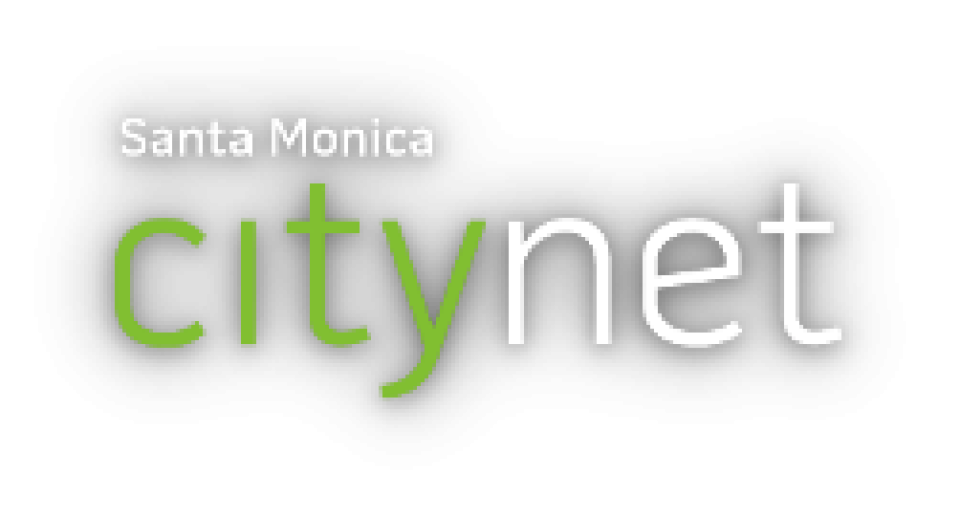
The city of Santa Monica built a successful citywide fiber network that connects government buildings, public schools, and affordable housing with speeds of up to 100 Gbps. Augmenting this already excellent network are a number of popular free wireless hotspots.
While slowly building out the fiber network, the city council envisioned adding free Wi-Fi throughout their community. In 2006, they developed a pilot project, installing hotspots in parks, libraries, and civic hall. It quickly took off.
During its first year, it had more than 750 users per day. By 2013, the number of users had grown at an astonishing rate to 3,800 users per day. The city now boasts 32 hotspots throughout 9 commercial corridors. The network allows logins for up to an hour as it is not meant as a substitute for home Internet service.
This widespread Wi-Fi network relies on the city’s fiber backbone. Learn more about the project in the ILSR 2014 case study, Santa Monica City Net: An Incremental Approach to Building a Fiber Optic Network, written by Eric Lampland and Christopher Mitchell.
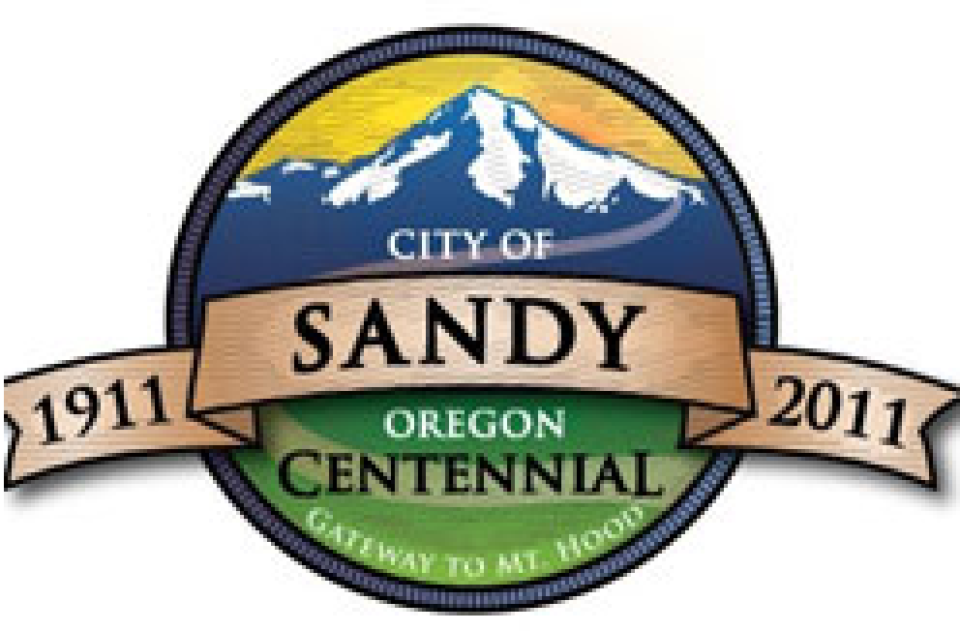
The beautiful town of Sandy, with its 10,000 residents, realized in 2001 that the incumbent providers would not bring high-speed Internet access to their homes. The incumbent providers had even refused to serve the town hall with a DSL connection. The townsfolk decided to start relying on their own ingenuity instead.
They built up a wireless network from scratch. Without a public electric utility – often a basic building block of a community network – the city created an entire Internet utility with citywide Wi-Fi coverage.
Although the Wi-Fi network worked well as an interim solution, the town soon realized that the next step to reliable, high-speed Internet connectivity was fiber. SandyNet is now one of the fastest, most affordable citywide Fiber-to-the-Home networks in the nation. For more information check out the report SandyNet Goes Gig: A Model for Anytown USA.
Wireless technologies, despite the technical, economic, and political challenges they present, are emerging as a critical tool for expanding Internet access in a more equitable and localized way. Not a replacement for fiber but a complement to it. This final section considers several innovative wireless structures that could continue to shift the broadband balance in favor of local control:
Wireless mesh networks, like the ones in Ponca City and Amherst, allow for direct peer-to-peer communication between various devices, such as laptops, phones, and routers. Mesh networks allow devices to communicate directly to each other without relaying information through central points for the network owner or government to monitor. They operate more like a walkie-talkie than a cell phone. These networks are notable for their resistance to external surveillance, and have been used in protest movements such as Arab Spring. Some see mesh networks as a way to bridge the digital divide in large cities like Detroit.
Case Study: Red Hook Initiative and Tidepools by Open Technology Institute
How Mesh Networks Can Bridge the Digital Divide by Bill Bradley, Next City
12 communities experimenting with mesh networks by Jason Tashea, Technical.ly
Poulsbo Wireless Mesh Pilot Extends Internet in Washington on Community Broadband Bits Podcast #66
Sascha Meinrath Causes a Commotion on Community Broadband Bits #41
Mesh networks function through cloud connectivity. The mesh itself consists of a series of radio nodes that connect to one another, providing wireless service, and back to wired backhaul connections. The more active radio nodes, the more redundancy the mesh network has. In an interview with ILSR’s Chris Mitchell, Sascha Meinrath of the Open Technology Institute at the New America Foundation, compared mesh nets to spiderwebs:
“So, the traditional cellular infrastructure is like a hub-and-spoke. Think of it as a bicycle wheel. Everything connects through that central hub. What we're talking about is more of a spiderweb, where there's multiple different pathways between any two points on that web of connectivity.”
During Hurricane Sandy, mesh networks like Brooklyn’s Red Hook, provided real-time connectivity and disaster relief for one of the hardest hit areas, gaining the network national coverage. In Detroit, the Digital Stewards mesh net has begun to bridge the digital divide in a city in which, as recently as 2012, 40 percent of residents lacked Internet access. Several other communities are experimenting with mesh networks, including Baltimore, Portland, and Saint Louis. Mesh networks can be found all over the world. For example, Guifi is the large mesh network that operates in Catalonia and Valencia in Spain.
Some rural communities, in an effort to expand locally-controlled wireless networks, are using the unlicensed spectrum between television channels - known as TV white space - to expand access. TV white space can provide wireless service at lower frequencies across much wider distances than traditional Wi-Fi and does not require “line-of-sight,” which means it can also penetrate hilly or forested areas.
The first TV white space pilot program was turned on in 2012, in North Carolina’s New Hanover County. The service was deployed in public parks, and other environmentally sensitive areas through which running fiber would be destructive. Additionally, TV white space also contributes to the city’s smart grid system. Several other TV white space pilot programs have emerged in the past several years, such as one in Thurman, New York, and another through the Gigabit Libraries Network. Listen to our podcasts about the program at the Gigabit Libraries Network and the 2017 proposal from Microsoft.
Although 5G (Fifth Generation) is the most highly anticipated new development in the world of wireless, it will not be the cure-all for lackluster connectivity, especially not in rural areas. Considering how the technology works, it will likely be best suited to complement wireline technologies in dense urban areas, especially in large venues like commercial buildings, concert venues, and conference centers.
5G will likely use millimeter waves, the section of spectrum between 30 Ghz and 300 Ghz, and primarily be based on "small cells." Historically, mobile cellular devices used “macro cells” that might be thousands of feet or miles away. Small cells will be hundreds of feet away and closer to the ground, connecting a smaller number of users.
The Challenges of 5G Deployment by Doug Dawson, POTs and PAN s, CCG Consulting
Lincoln, Nebraska, has also encouraged small cells to improve mobile coverage. David Young, the Right-of-Way Manager for the city of Lincoln, explained in an interview: "This is laying the infrastructure for 5G, but 5G is several years away." In the meantime, local governments should be working with industry to update permitting policies because the same process that was used to permit macro cells may be inappropriate to oversee some small cell installations. See the rest of our David Young interview for a broader discussion or these resources from Next Century Cities.
The wireless industry has yet to finalize standards, and the technology is still evolving. At the end of the day, however, 5G networks need to be in close proximity to a high-capacity backhaul connection. That would mostly be fiber.
5G promises to have some significant advances for wireless technology, but too many people are foolishly hoping it will solve all connectivity problems. It will not be a panacea, it will be a significant incremental improvement that will occur alongside a continuing need to high quality fixed connections to residents and businesses.
For years, some wireless proponents have claimed that the ever-evolving wireless technologies would soon match or eclipse fiber networks in speed and reliability. These claims started with the introduction of Wi-Fi. When Wi-Fi’s limitations became apparent, people had already begun to tout WiMax as the answer. They later said the same about 4G LTE, and now reports are saying that 5G will soon be faster and more ubiquitous than fiber. If the past few years have shown us anything, it is that wireless networks do not replace fiber networks.
Even though wireless technologies are advancing quickly, fiber technologies have also greatly improved. For instance, many communities with Fiber-to-the-Home can easily get 1 Gbps service as now, and several of these communities are now upgrading their equipment in order to provide 10 Gbps service. These fiber connections provide every home with a greater capacity than wireless networks that are shared among many homes and likely have strict monthly data caps.
“The whole opposition of the two is nonsensical. Fibre broadband – and more generally fixed broadband – today is a different use case than mobile broadband. Who watches a HD football match live on a 60-inch screen with mobile broadband? No one. Not only would the mobile network not be able to sustain such massive streaming to every house simultaneously, it would also blow up everyone's mobile data cap. The fixed and mobile business models are different for a reason.”
-- Benoît Felten, Diffraction Analysis, 2017
During the mid-2000s there was a push for citywide wireless networks to offer a “third pipe,” or competition to the DSL and cable duopoly (which had mostly finishing crushing the competition left over from the days of dial-up. These wireless networks were, from their inception, laden with high expectations, as many people thought Wi-Fi would spread out across large, diverse cities like a silk sheet over a queen-sized bed.
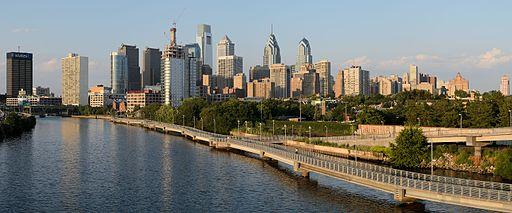
King of Hearts / Wikimedia Commons / CC-BY-SA-3.0 [GFDL or CC BY-SA 3.0], Philadelphia via Wikimedia Commons
We need only look to Pennsylvania to find a muni-wireless project. During the late 1990s and early 2000s, Comcast and Verizon held a duopoly on Internet service in Philadelphia. By 2004, city officials decided to take action with the idea of a ubiquitous Wi-Fi network. They quickly put together a task force to explore what it would take to expand Wi-Fi throughout the entire city.
The task force set as their goal – digital inclusion, affordable high-speed Internet access for low-income communities. After months of meetings with local businesses, nonprofits, and community groups, the task force had developed a plan. They proposed the creation of a nonprofit to own and oversee the Wi-Fi network. This nonprofit would provide wholesale access to a few ISPs that could provide service on the network. This original plan, however, was soon made moot by the introduction of Earthlink.
Earthlink is a private wireless provider that marketed itself to multiple cities throughout the early 2000s. The company promised that they would pay for and build the network themselves, but the city had to surrender ownership of the project.
Wireless Philadelphia, the nonprofit in charge of the network, disregarded the task force’s recommendation and accepted Earthlink’s offer. It soon became clear, however, that Earthlink was not up for the challenge.
Earthlink had misjudged the infrastructure needed for the network. The network was slated for completion in 2006, and then 2007, and then 2008. Verizon and Comcast, meanwhile, dropped prices to siphon potential subscribers away from the new Wi-Fi network. Earthlink wanted out.
In 2008, a group of local IT professionals formed a new group aptly named Network Acquisition and bought the nearly $17 million network. In late 2009, the city purchased the network from Network Acquisition for $2 million in order to repurpose it for public safety.
“Plans are being scaled back that were originally built upon unrealistic, over-inflated expectations. The laws of economic reality, like the laws of physics, cannot be violated without severe, often negative results.”
-- Craig Settles, Community Broadband Consultant, 2007
After being used by many people to describe different networks, structures, and business models, the term "Muni-wireless" has become meaningless. In many of these cases, such as San Francisco, Houston, and Philadelphia, the local government had very little role in the network and the failure was a result of a private company over-promising and under-delivering a network it owned. Peter Collins has rightly rebranded this:
“Pri-Fi” = A broadband delivery model in which a private-sector wireless provider constructs, own, and operates a Wi-Fi network in a major city without requiring any substantial commitments from the city or exposing the city or its taxpayers to any financial risk. When such projects fail, as they usually do, opponents of municipal broadband misrepresent them as failed municipal projects and cite them as proof that public broadband projects are failures.
Too many discussions about the failures of Muni-wireless (or even more broadly - community broadband), use examples where the community was barely involved.
Several lessons were learned from these networks. First, wireless networks should involve a greater degree of community involvement and support. Second, they should be built incrementally, with robust and varied funding mechanisms, rather than relying solely on advertising and subscription revenues. Third, Wi-Fi is insufficient to provide high-quality indoor connectivity.
The Philadelphia Story from Open Technology Institute at New America
Municipal Broadband: Demystifying Wireless and Fiber-Optic Options from ILSR
Hopes for Wireless Cities Fade as Service Providers Pull Out from The New York Times
Is There a Business Case for Free Wi-Fi? from Pots and Pans
Wireless is an exciting, rapidly growing technology. Most of the devices we buy in the stores will be natively wireless. But they will use Wi-Fi and other local wireless protocols to connect to your home or work wireless routers, which use your home wireline connection (most likely cable, fiber, or DSL) to access the Internet. Though some Wireless ISPs, like NetBlazr, are using point-to-point wireless networks to connect large apartment buildings, our conversation with them suggests they do not expect to be connecting single-family homes soon. The vast majority of us will keep using both wires and wireless devices.
